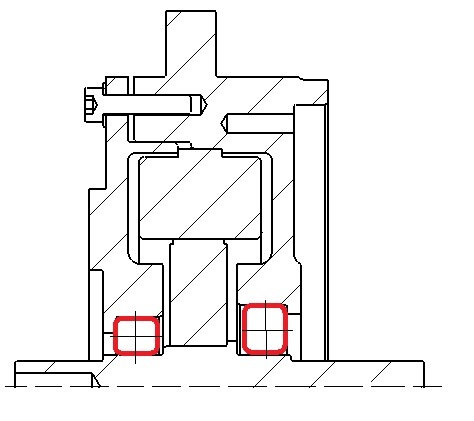R1chJC
Marine/Ocean
- Apr 15, 2015
- 51
Hi All,
Perhaps people can help me with a debate we are having at work.
See picture.
My colleagues are questioning what Datum A brings to the table for the positional call-out on the ∅37. They argue that referencing Datum B should suffice for controlling the concentric relationship between the two bores.
From a functional perspective, the Datum B bore houses one end of a shaft bearing. The datum A face is a spigot/location diameter that abuts to a mating part in the main housing. I want to ensure all bores are concentric. I'm also trying to convince them that using an actual concentric tolerance is not necessary and inspecting it is pure evil..
I thought that having datum A introduces a perpendicularity control. A separate thread here: Link describes something similar and I can follow the train of thought in that post, but i'm having a hard time applying that logic to my example.
I've seen it many times where a positional tolerance for a bore references a perpendicular mating flange face.
We work to ASME.
Thanks all.

Perhaps people can help me with a debate we are having at work.
See picture.
My colleagues are questioning what Datum A brings to the table for the positional call-out on the ∅37. They argue that referencing Datum B should suffice for controlling the concentric relationship between the two bores.
From a functional perspective, the Datum B bore houses one end of a shaft bearing. The datum A face is a spigot/location diameter that abuts to a mating part in the main housing. I want to ensure all bores are concentric. I'm also trying to convince them that using an actual concentric tolerance is not necessary and inspecting it is pure evil..
I thought that having datum A introduces a perpendicularity control. A separate thread here: Link describes something similar and I can follow the train of thought in that post, but i'm having a hard time applying that logic to my example.
I've seen it many times where a positional tolerance for a bore references a perpendicular mating flange face.
We work to ASME.
Thanks all.



![[banghead] [banghead] [banghead]](/data/assets/smilies/banghead.gif)